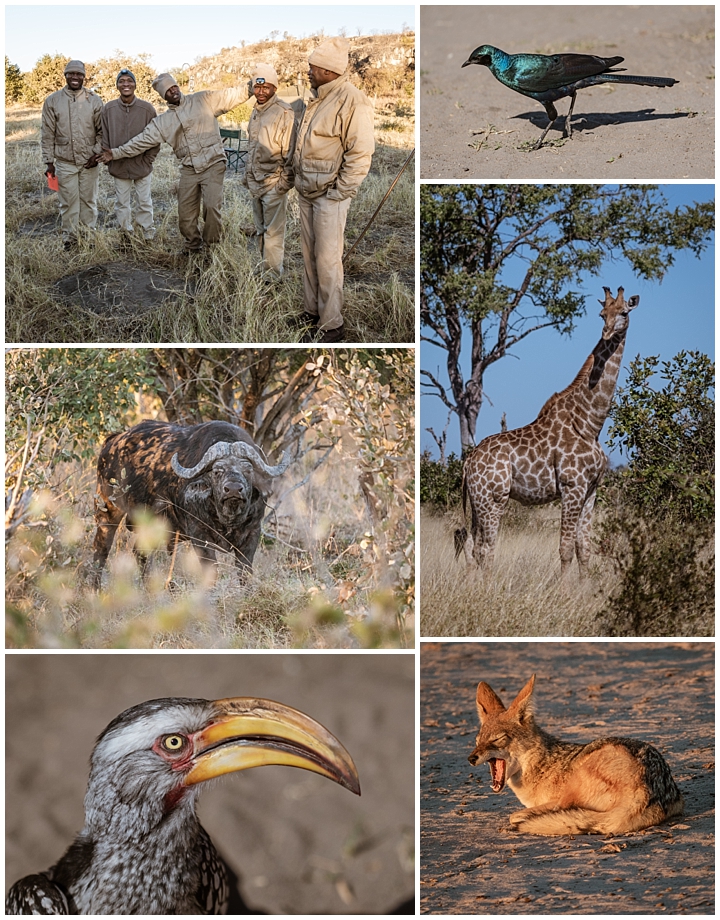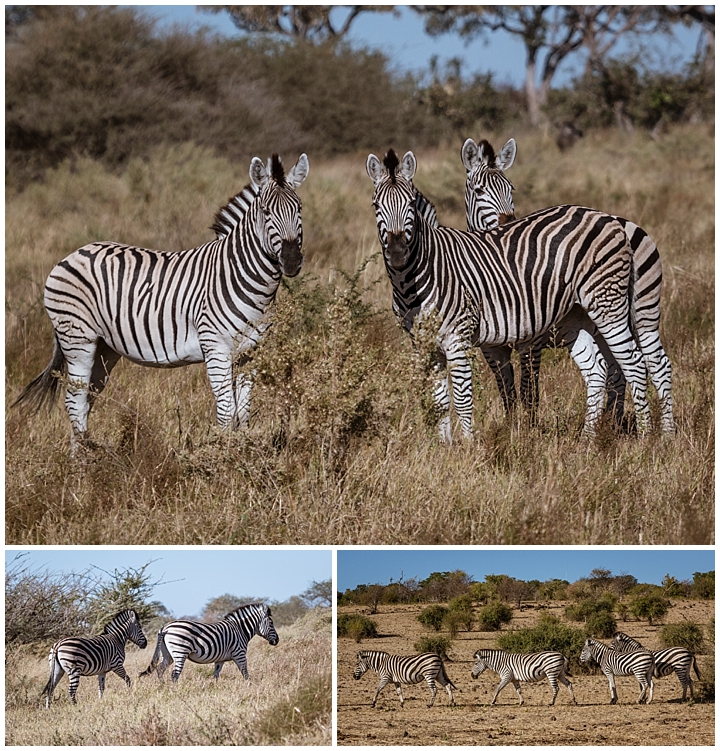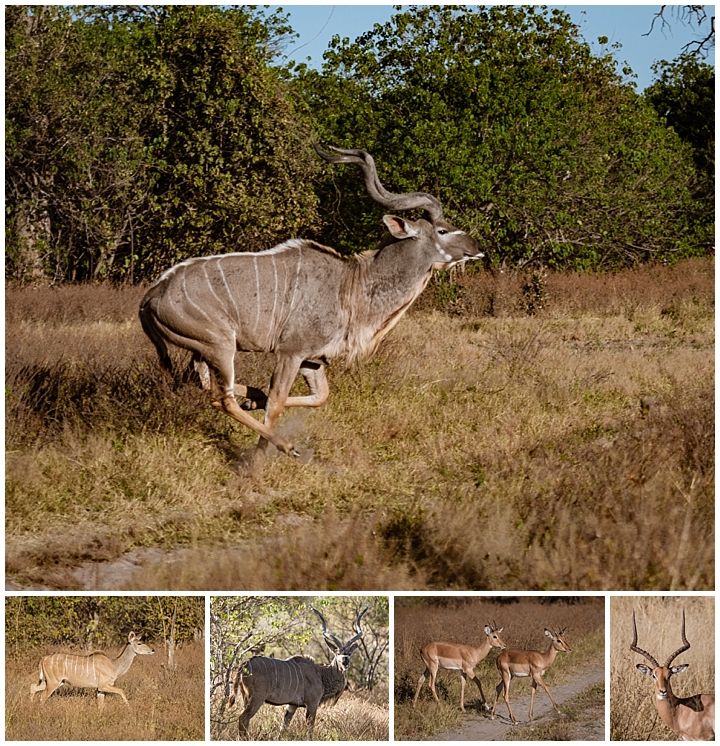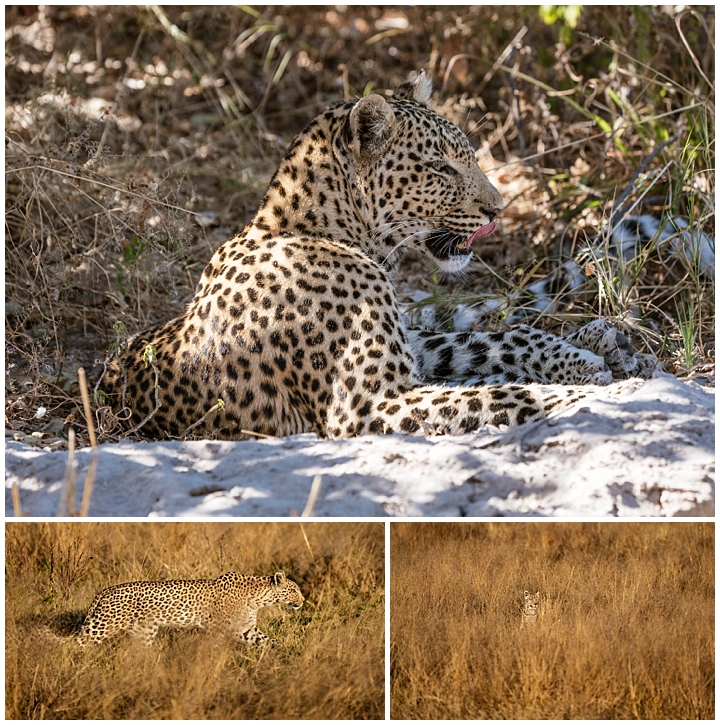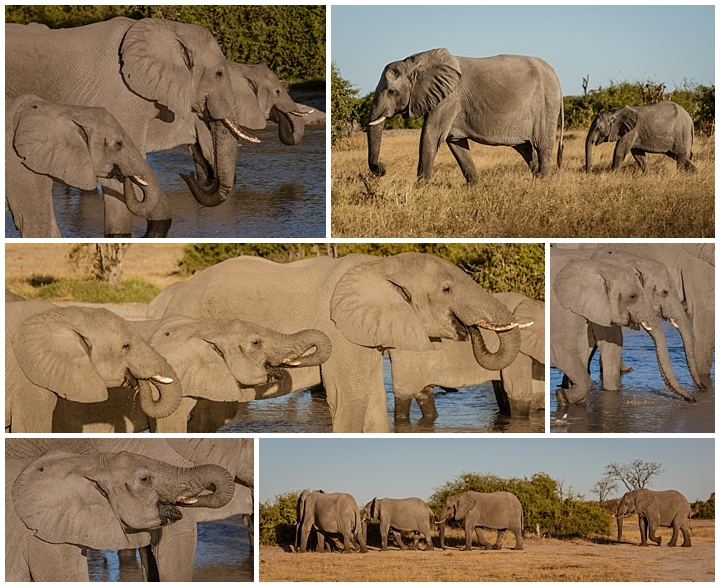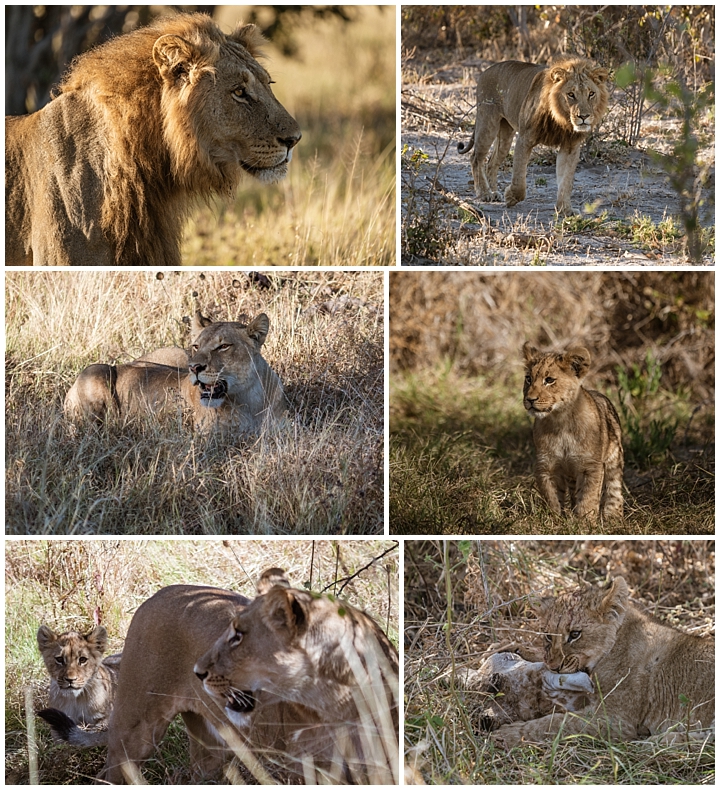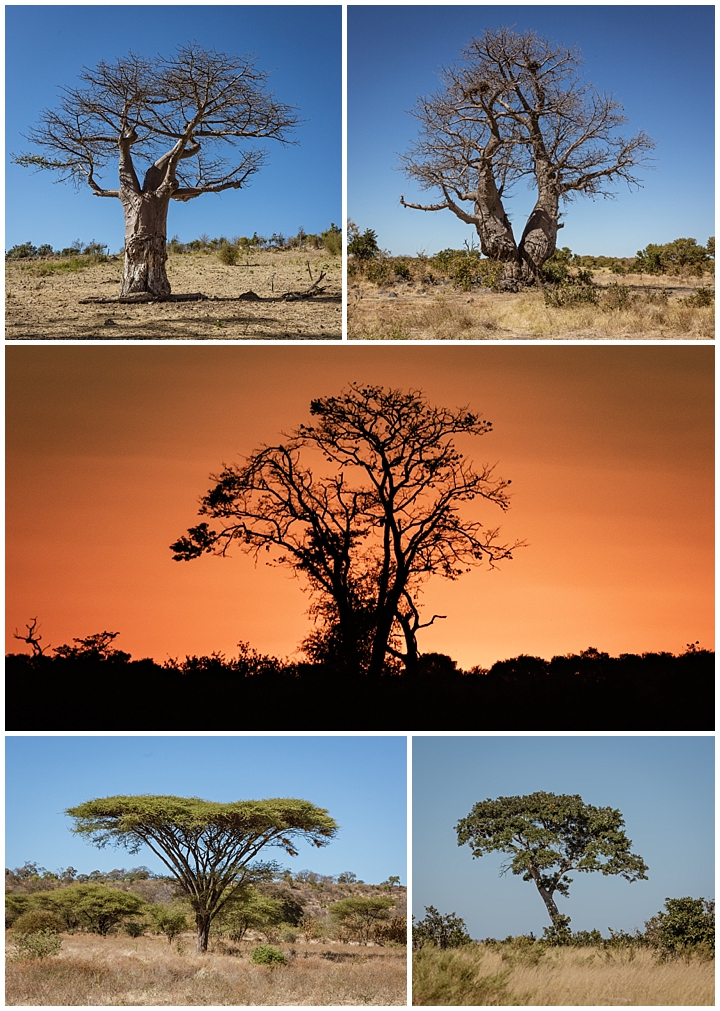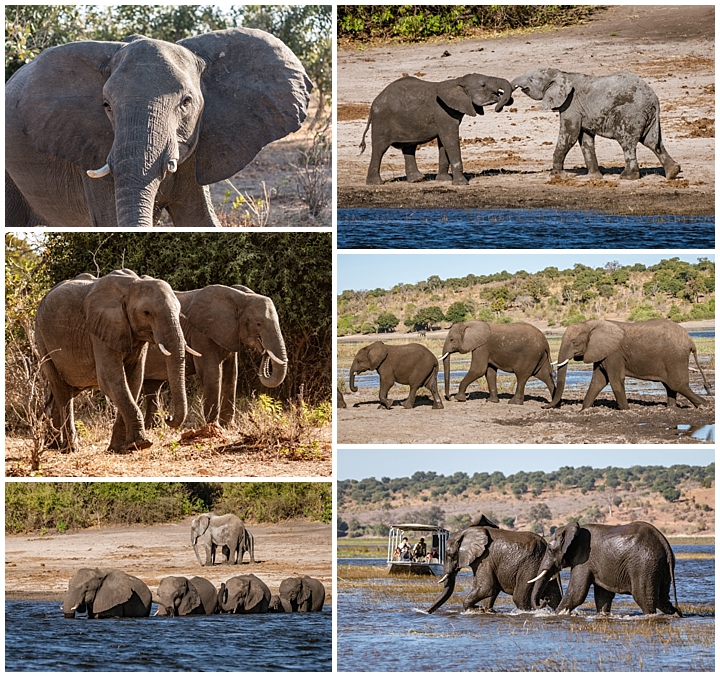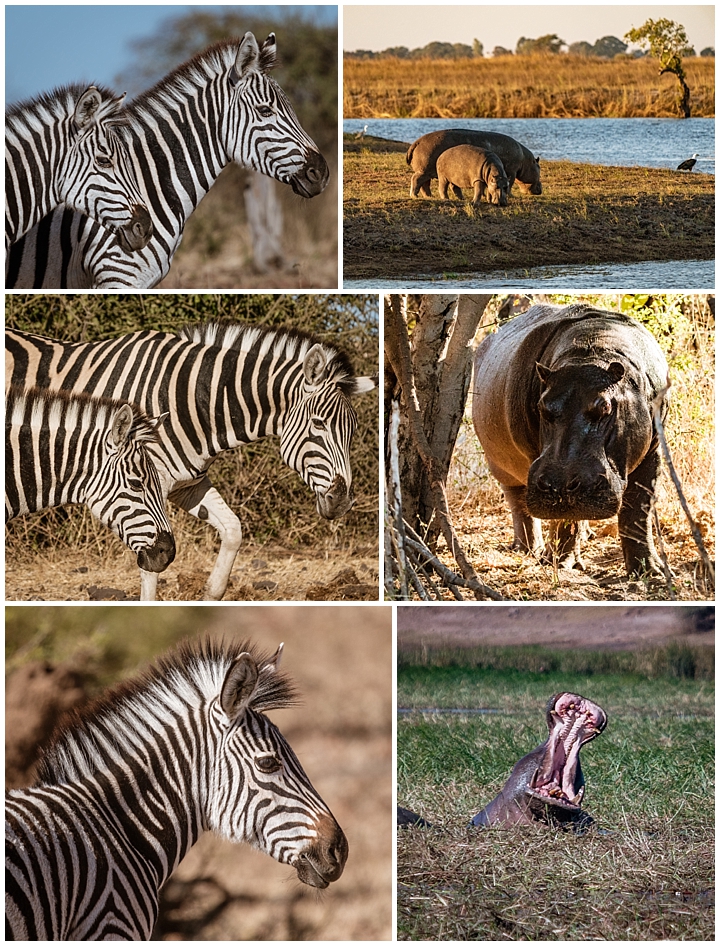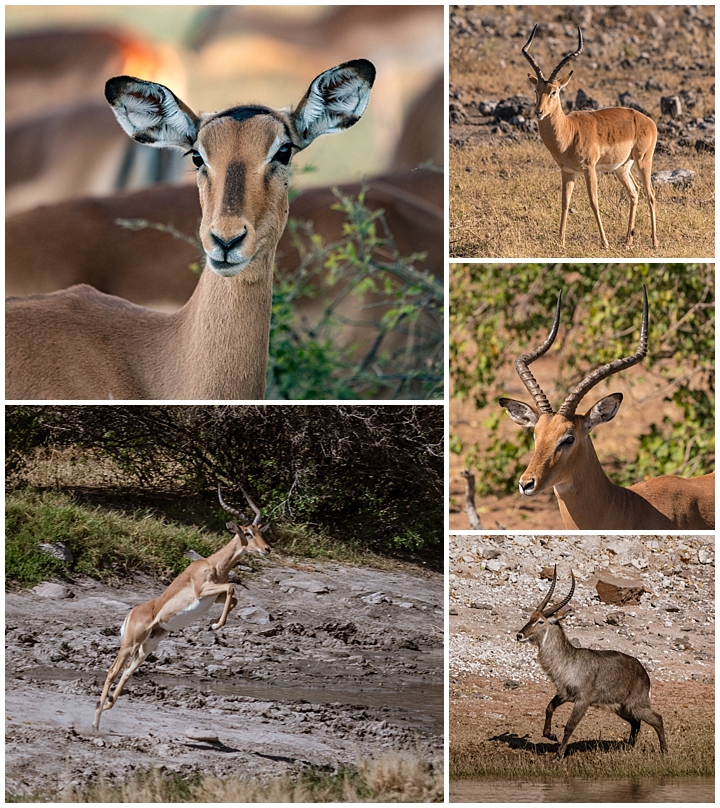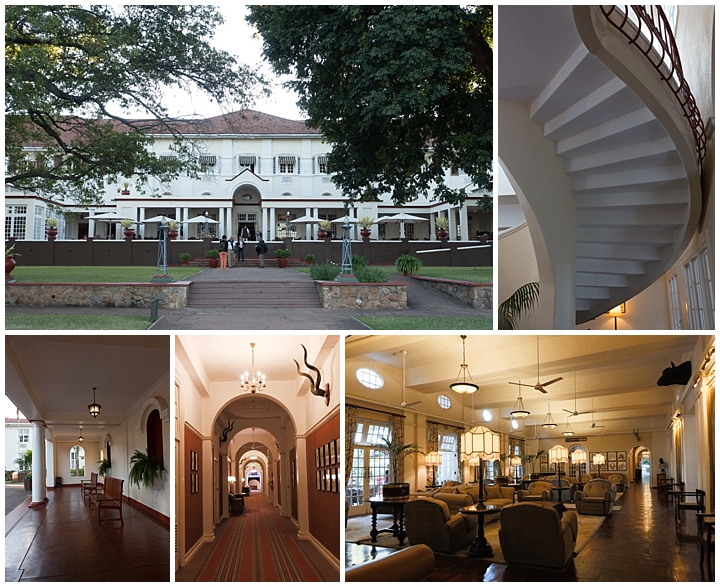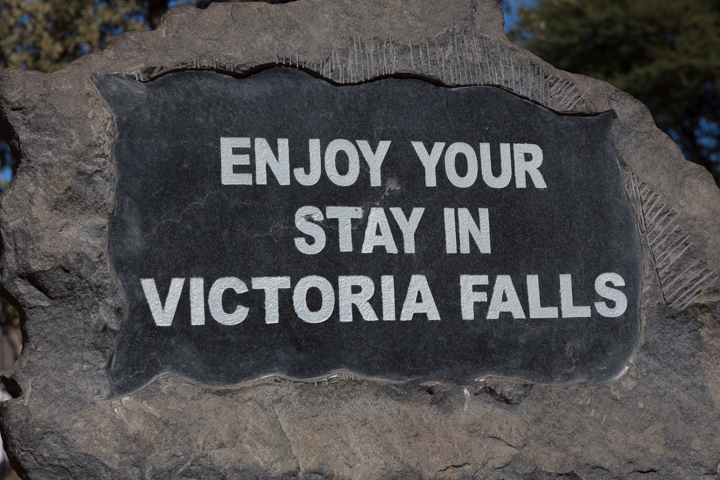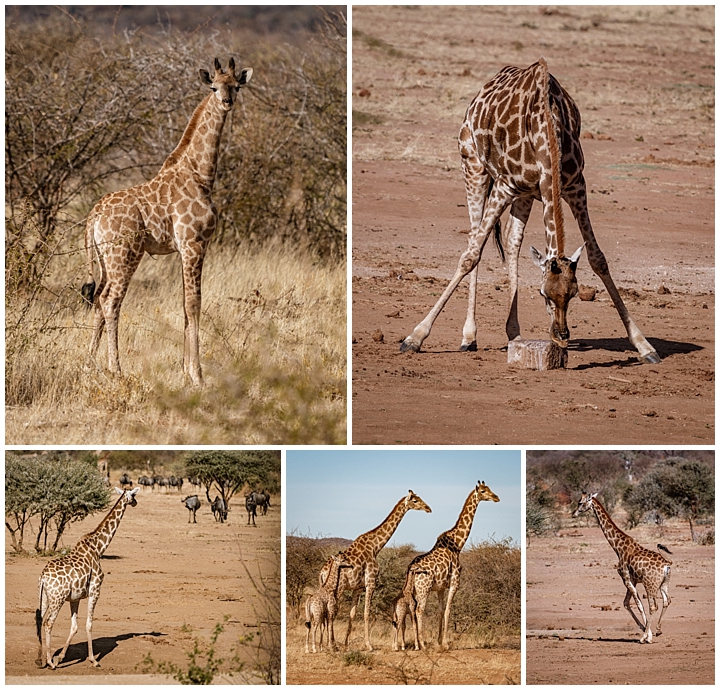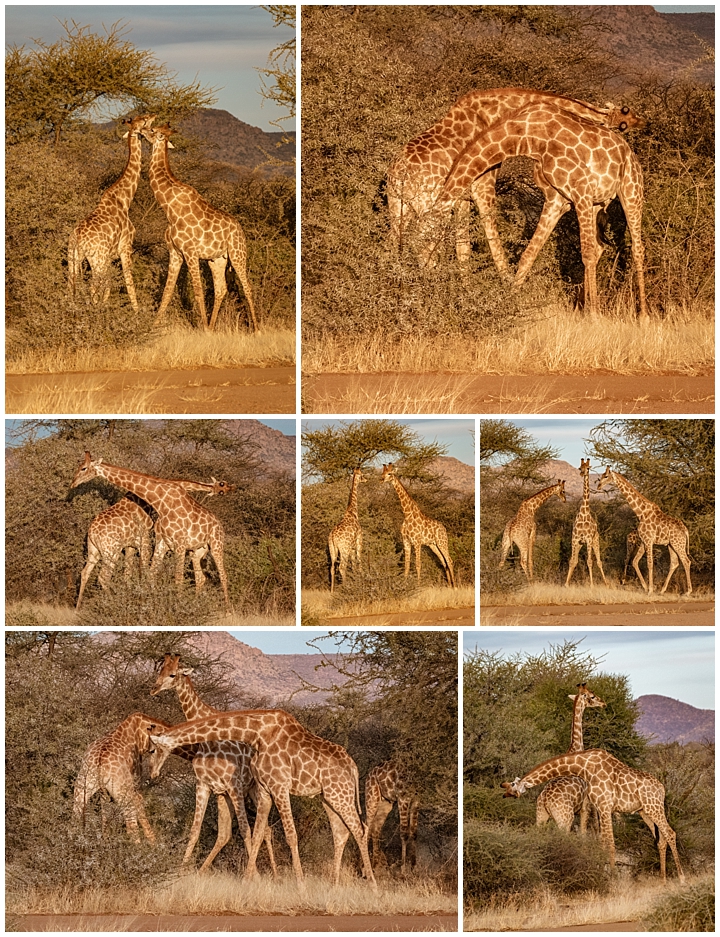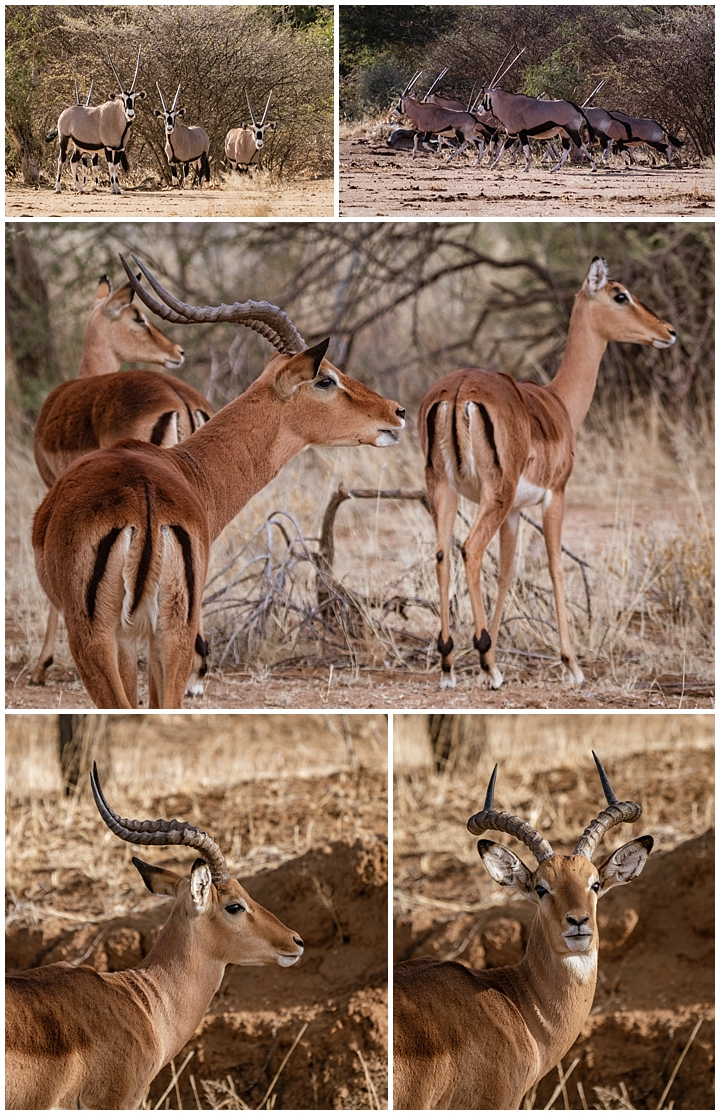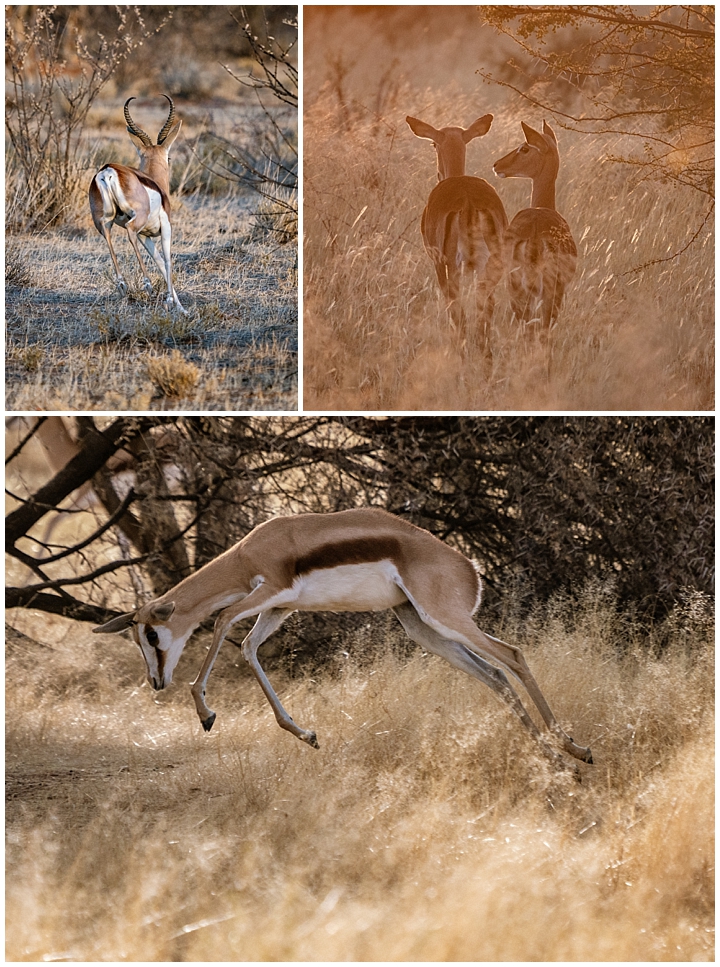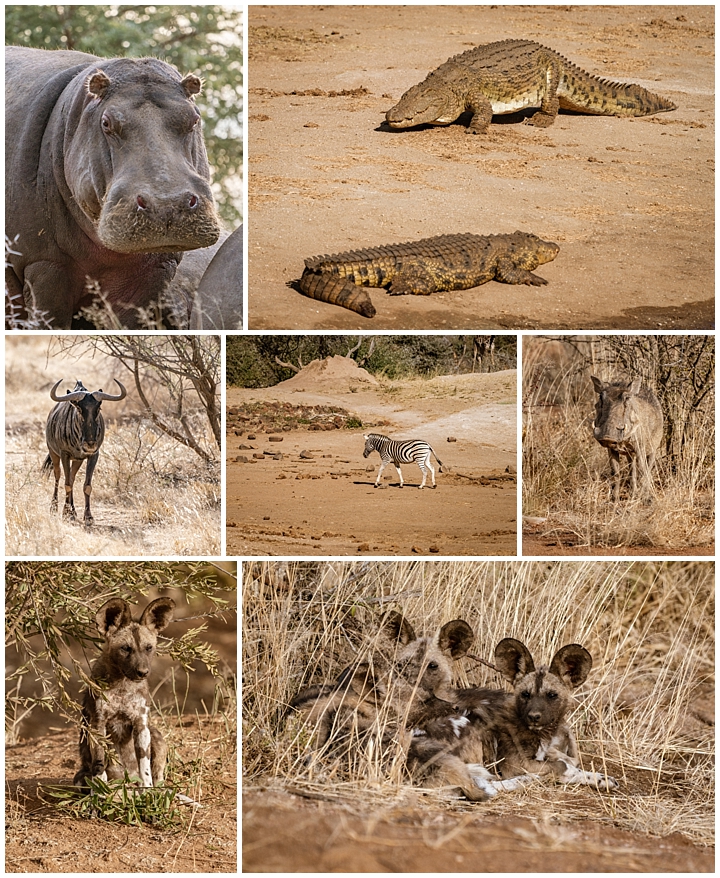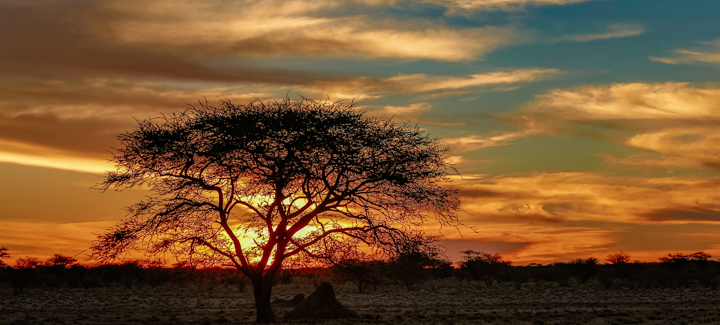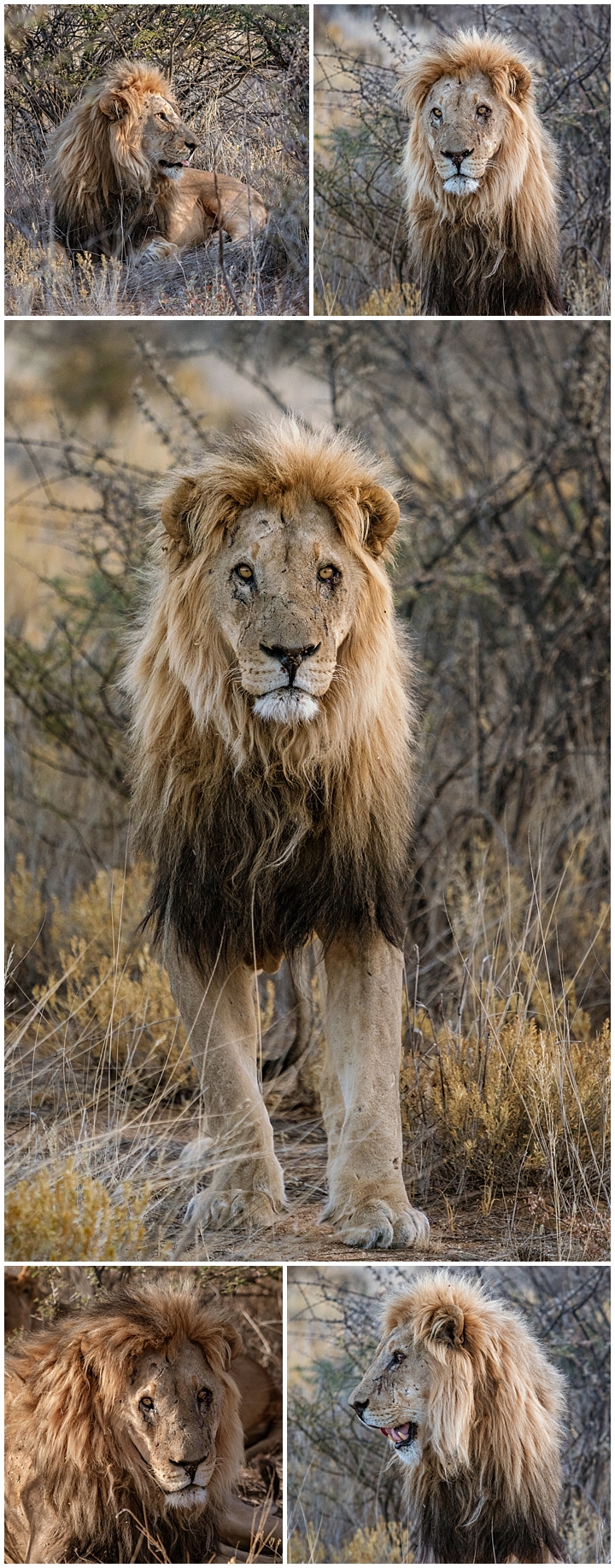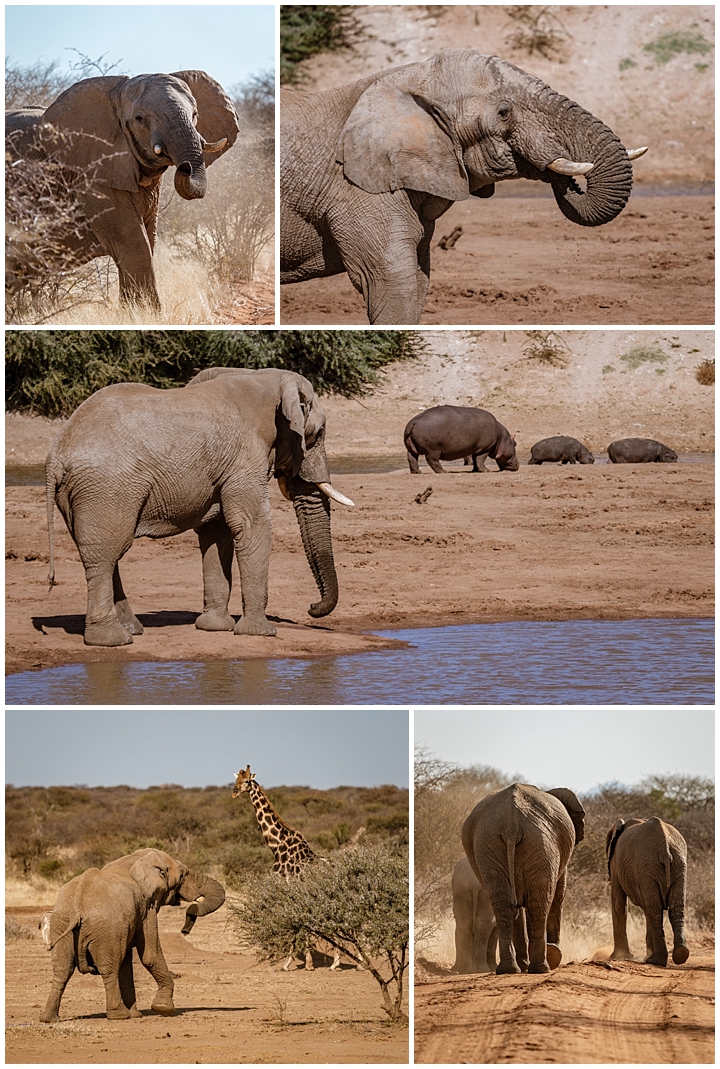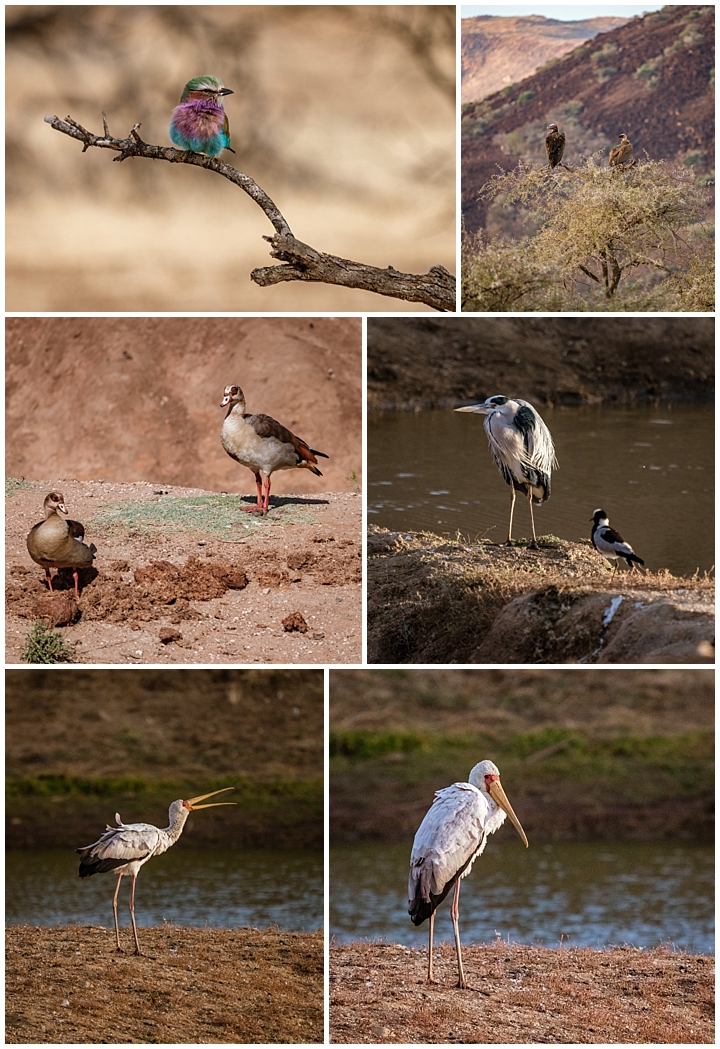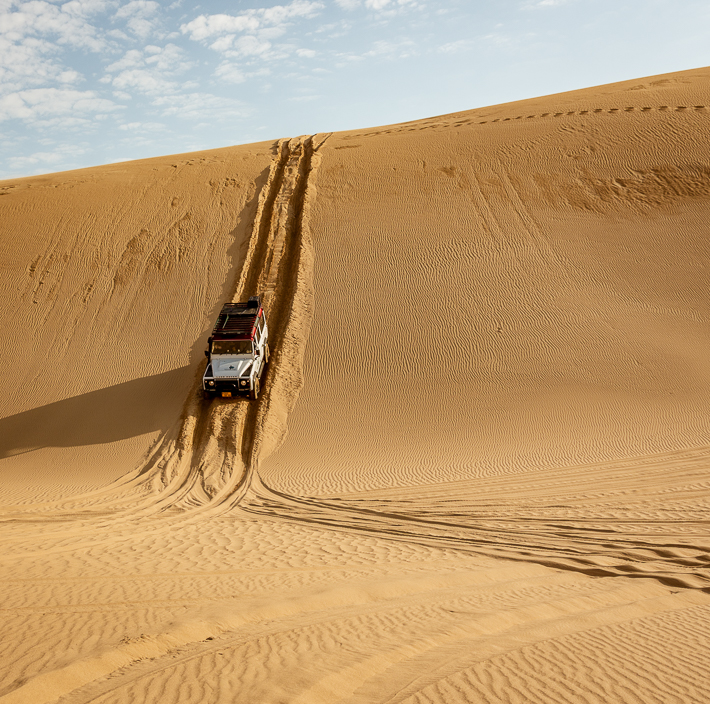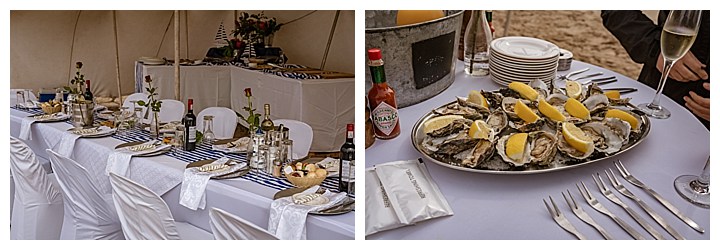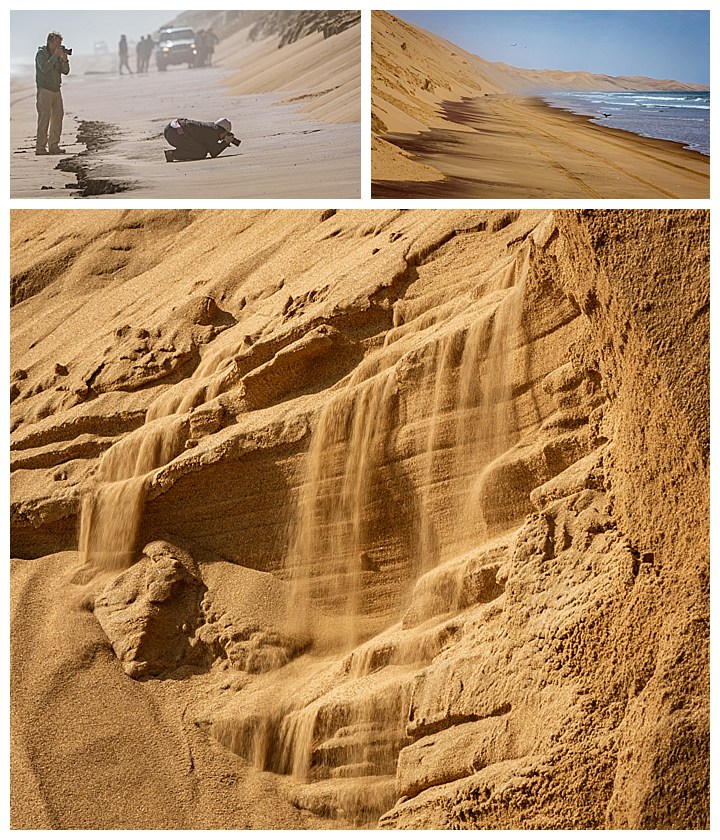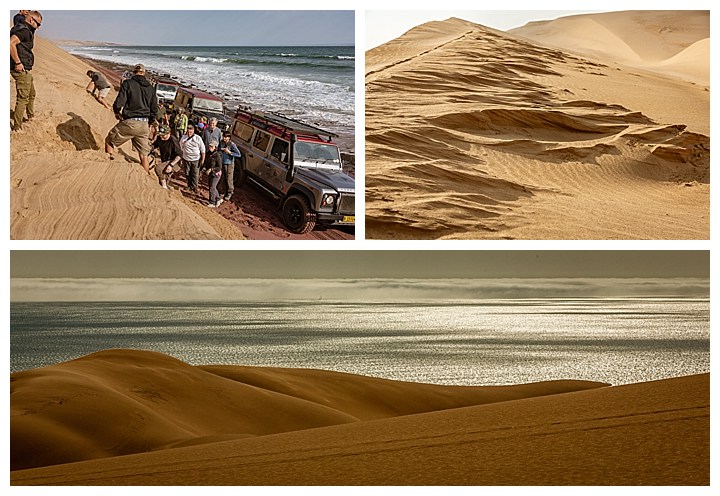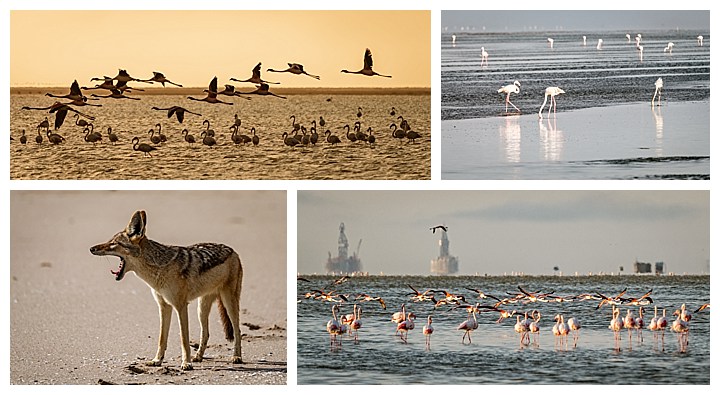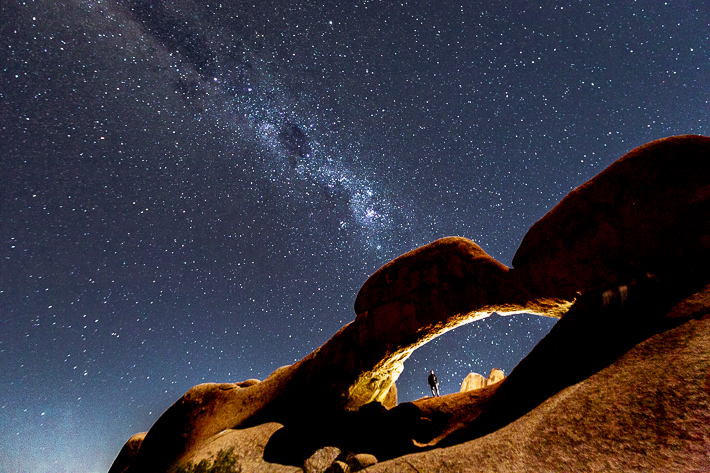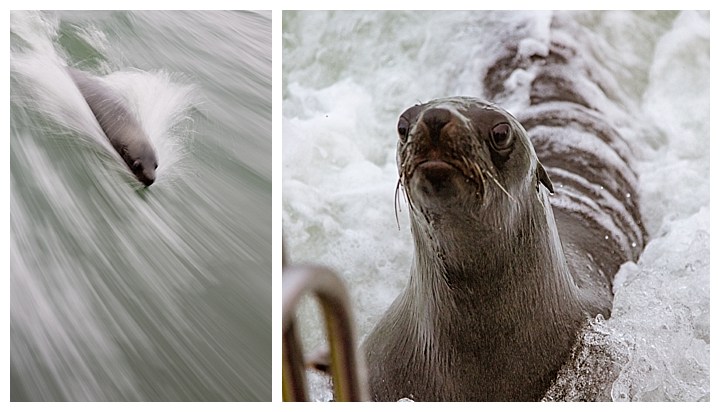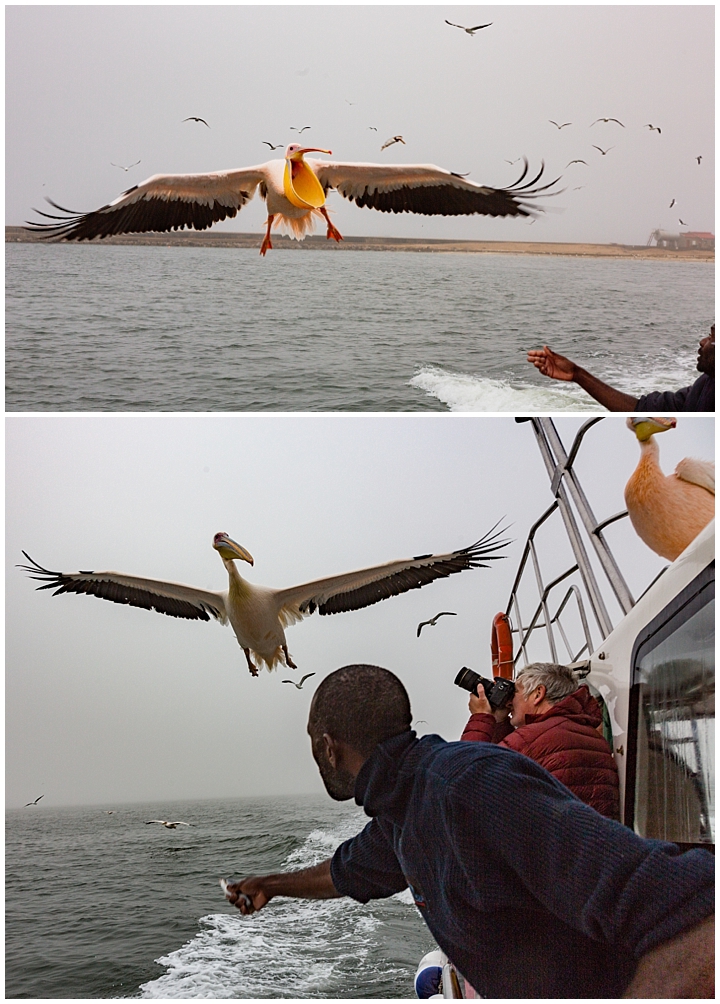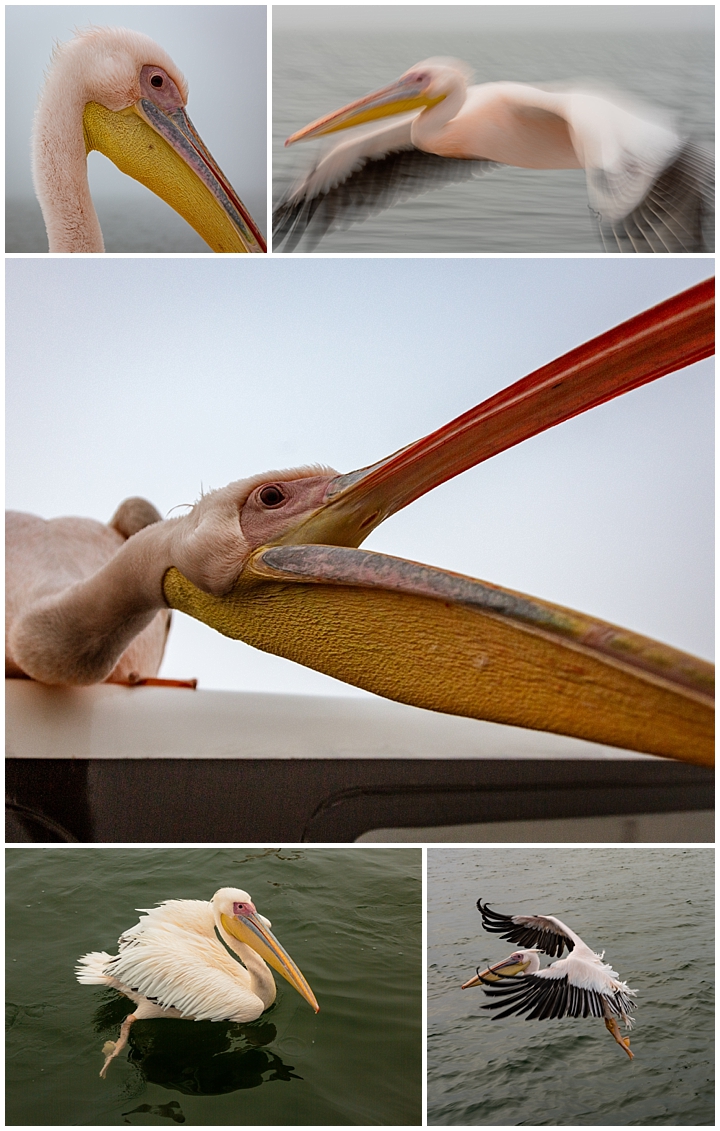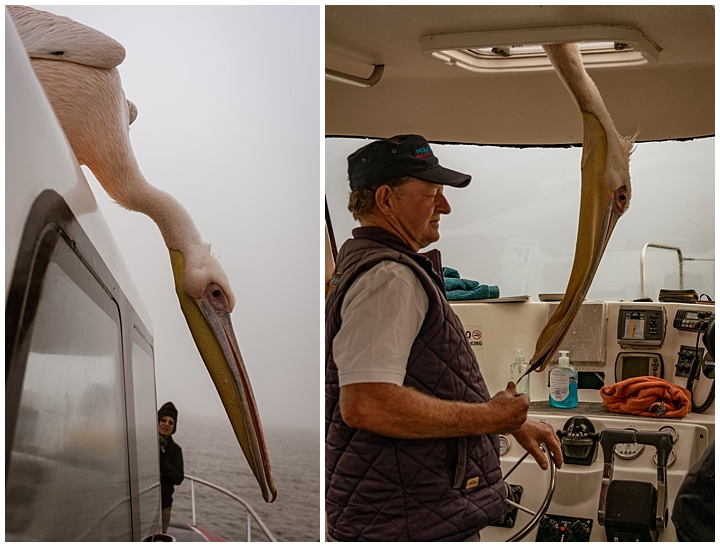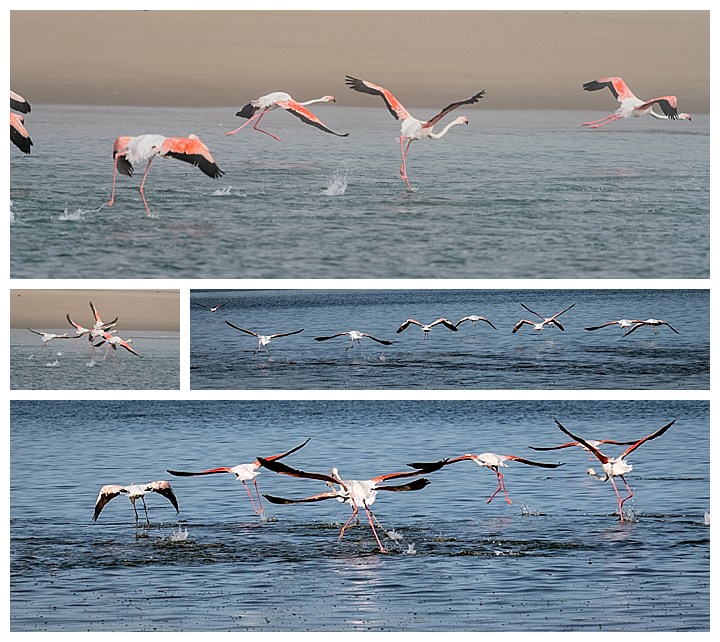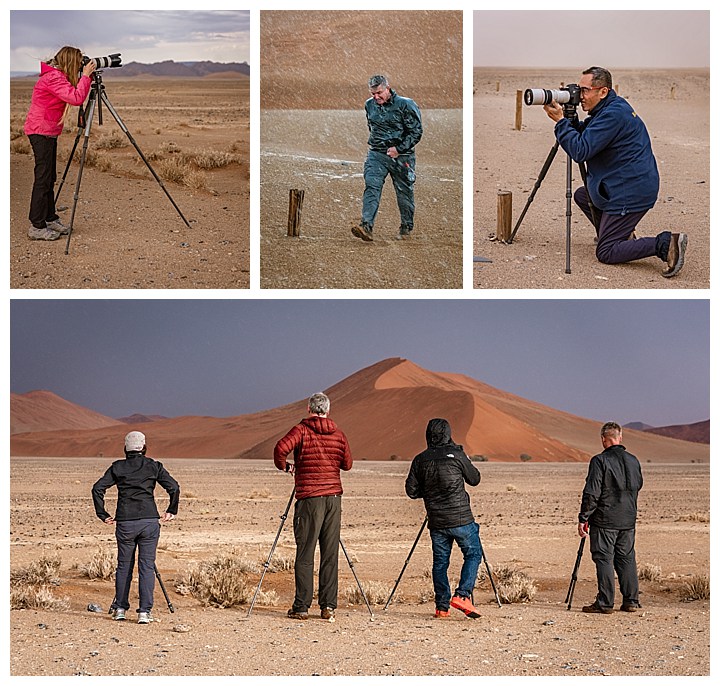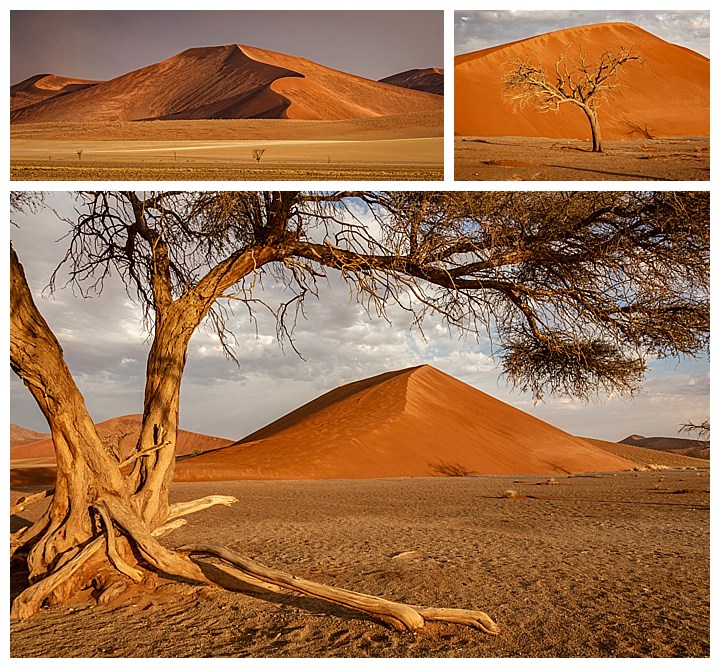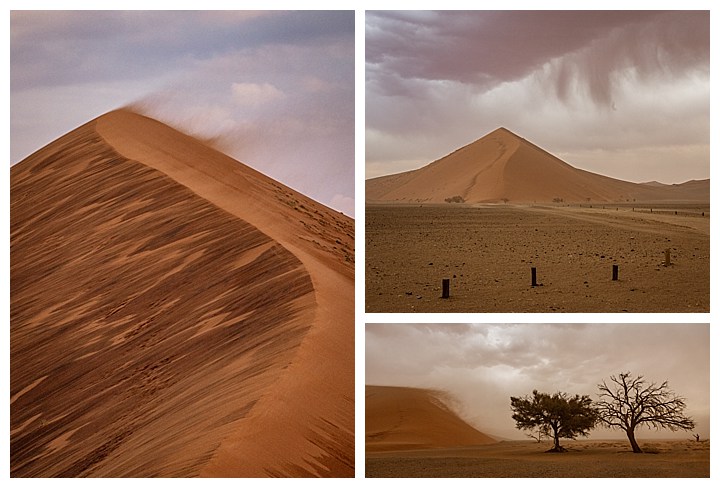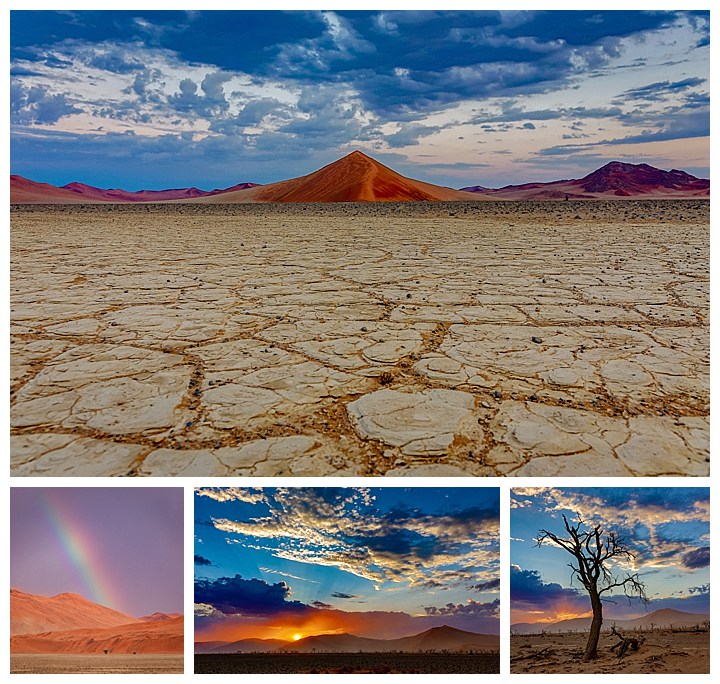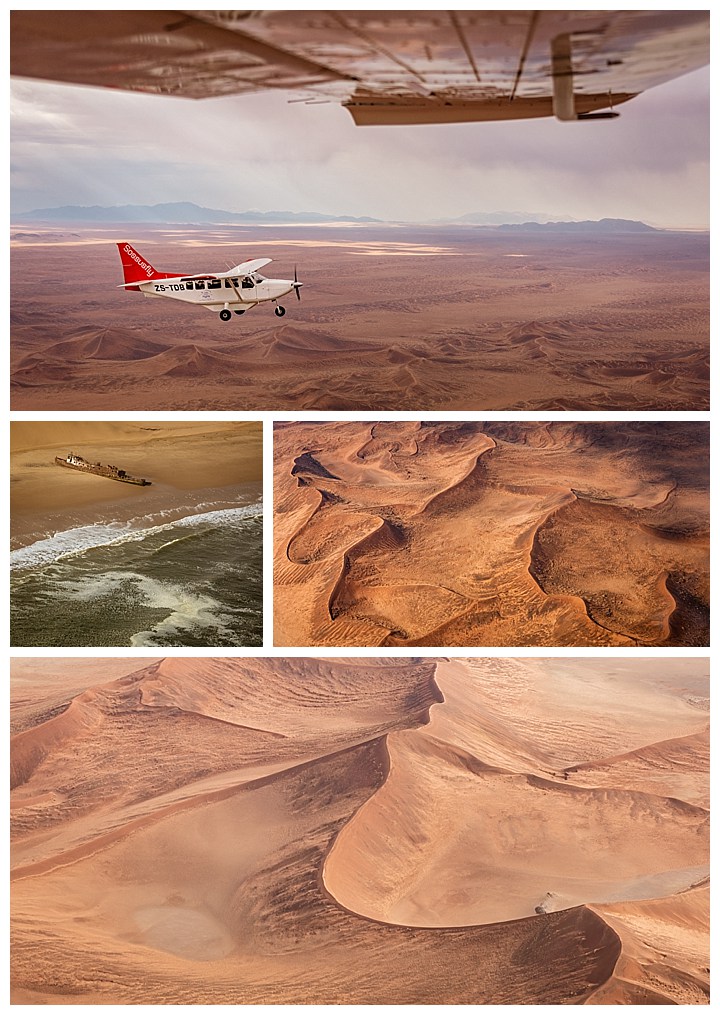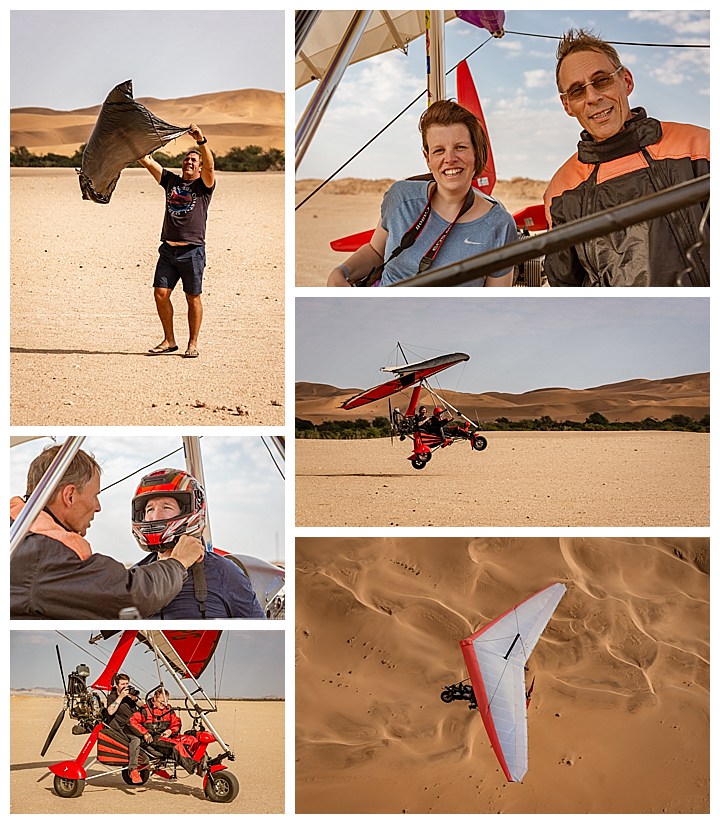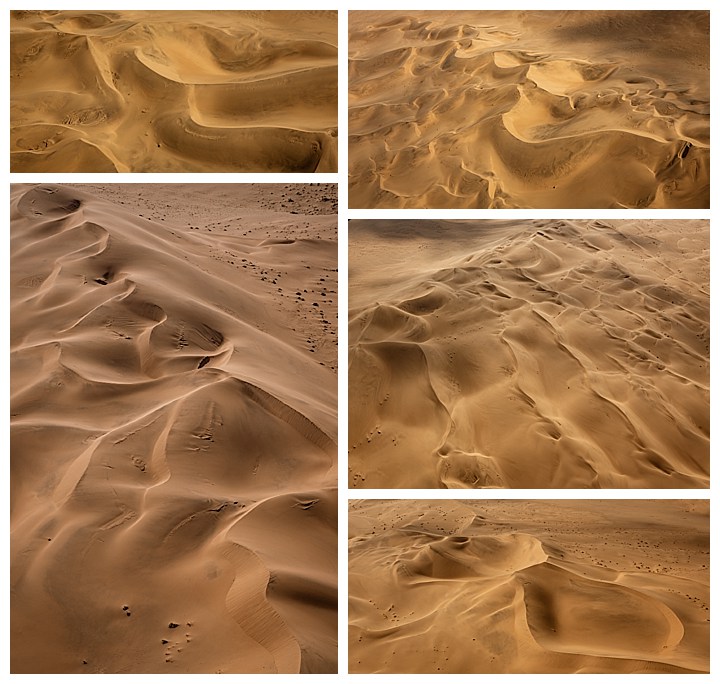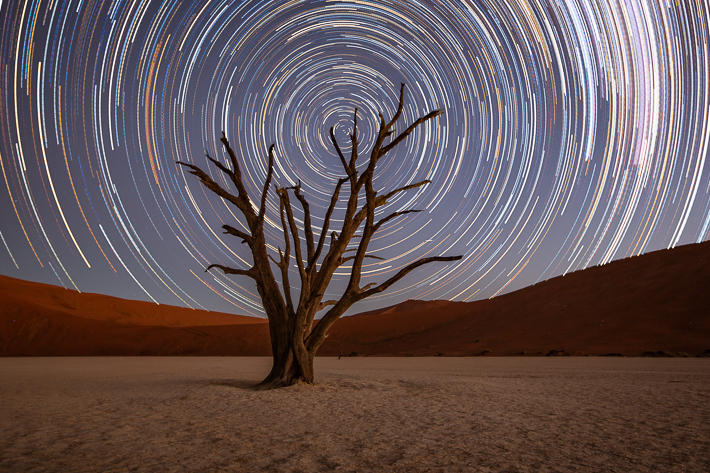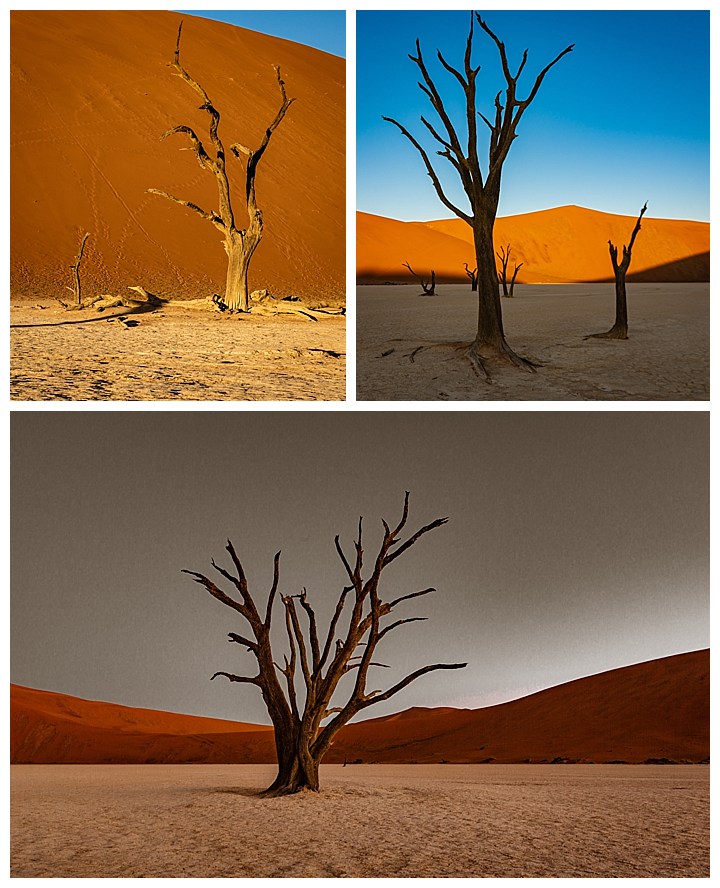
We continued our Botswana tour by moving to our third tent camp of the week, located in the Moremi Game Reserve. This camp is called Khwai and is known for their extensive variety of wildlife. This is truly wild animal country, and we were warned again not to come and go from our tents without an escort. There are no fences around camp, and animals wander in and around constantly.
On one of the drives, we followed a pair of female lions stalking their prey with their male companion following behind. After a session of lying down, they both got up and began to walk through the dry grass. The female does most of the hunting for food, and you can see in the lower image just how well they camouflage into their surroundings. Unless they moved, we not able to find them in the field at all.
After dinner that evening, we heard a shout. Tuaro, the staff member responsible for turning down our beds at night, was severely frightened. He had gone down the path to our tent without a flashlight, and had seen eyes following him. The others went back to inspect the scene, and the eyes turned out to be that same trio of lions, only 15 feet outside our tent. They were now stalking Tuaro. We stalked the lions by day, but they stalked us by night. That evening, we were warned again not to leave our tents. Sure enough, we could hear sounds of hyenas and lions fighting over a kill around 3:00 AM. Our lions finally left us sometime after that.
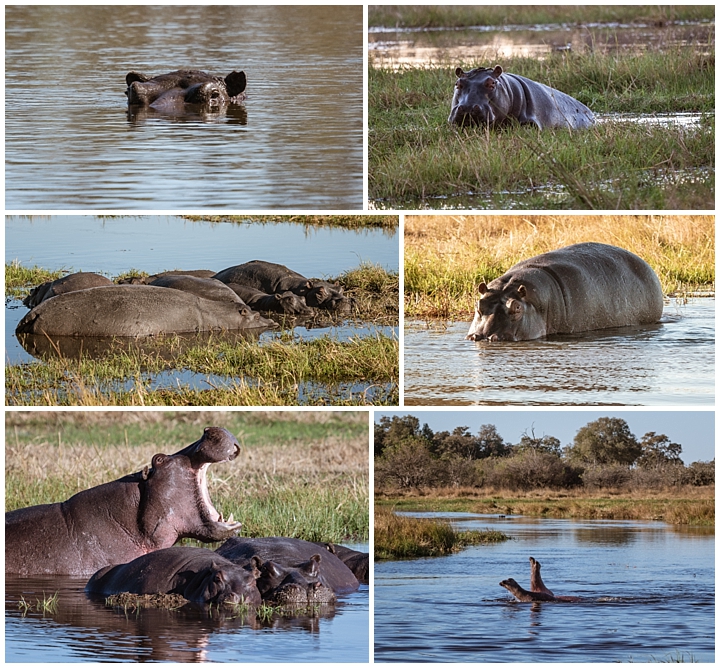
We found quite a few more hippos in this region than earlier. Most were quietly lying in the water, or moving slowly through it with only their eyes and ears showing (upper left). One suddenly did an interesting total roll, leaving a period with only his feet dangling in the air (lower right). Each time we encountered hippos, Sam, our driver and guide, would look around, to make sure that a hippo wasn’t about to cross nearby as we drove our jeep across. Hippos are considered one of the most dangerous animals in Africa.
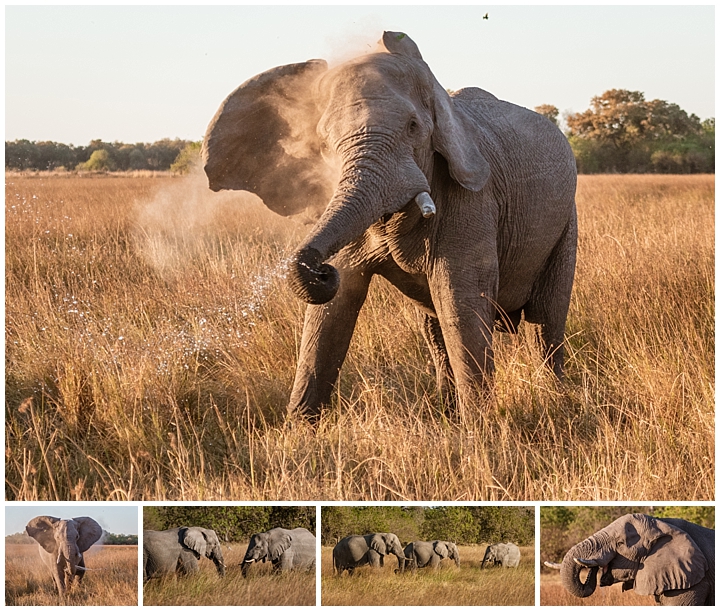
As before, there were plenty of elephants to be seen. Most of these were in short dry grass fields. One of them took exception to our being there, and started shaking his head and throwing water (upper) for a short time. Within a few seconds though, he seemed to lose interest in us, and returned to his eating of grass. We were warned not to get to close to male elephants in heat. These are the most aggressive elephants and most likely to charge a jeep. One swipe of their strong trunks can knock you out of the jeep. You can identify them by their strong smell, as well as see the wet glands below their eyes.
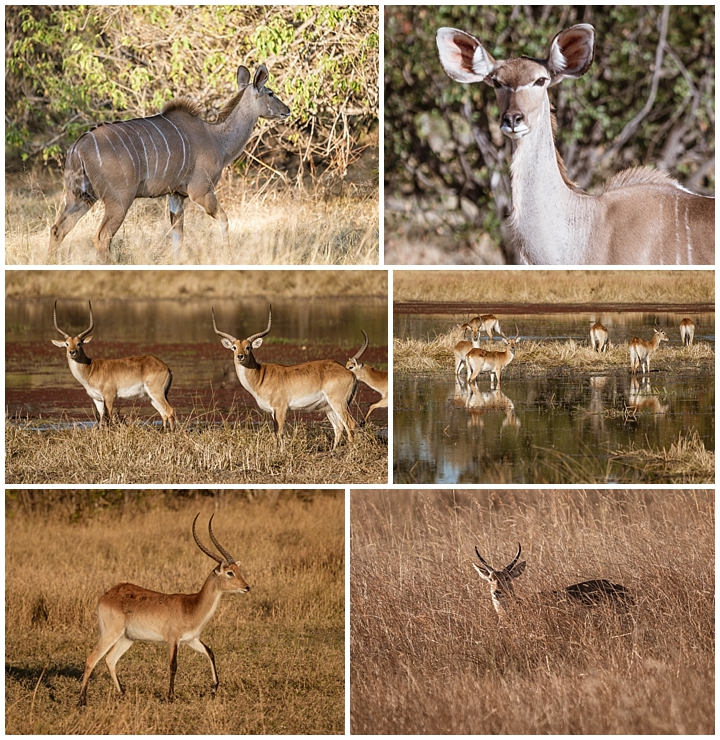
A wider range of antelopes existed in this region, with kudu (upper row) being much more common than before. We also saw quite a few red lechwe (lower two rows) here for the first time. Antelopes like to eat in shallow water areas (middle right), as it gives them protection against predators. Leopards and lions move more slowly through water than do antelopes, plus the predator splashing yields more advance warning.
Our guide is an excellent tracker, able to spot how fresh the tracks are for various animals, and what directions they are headed. Since this is a private reserve concession, we are allowed to drive off road, which is a mixed blessing. That meant we can get to where the animals are, but it also means we need kidney belts as we try to hang on.
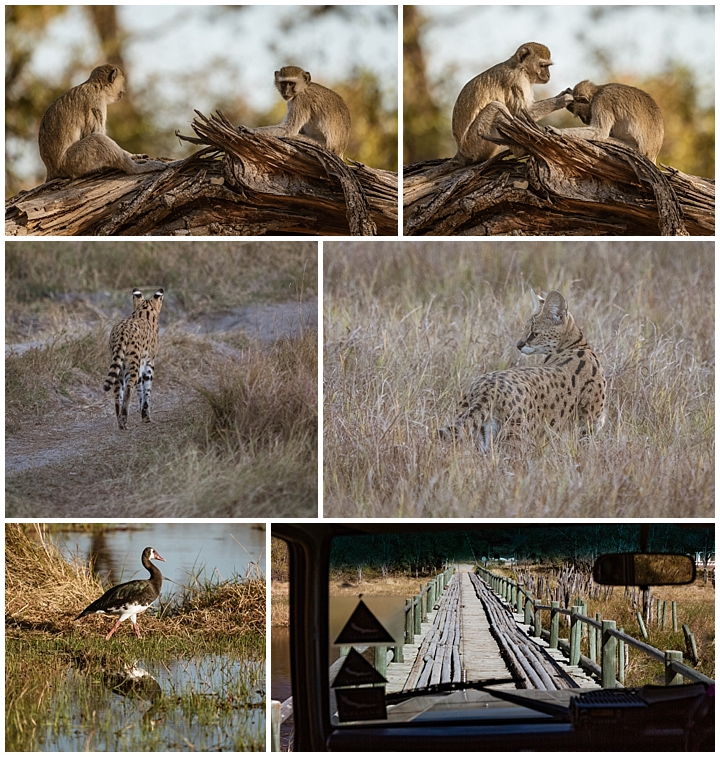
As we were driving on the dirt path, a serval cat suddenly jumped in front of us (middle row). We followed him for awhile in a bumpy, jarring chase, until he turned into the brush (middle right), where he quickly was out of sight. The monkeys are overhead in the tree in this Botswana camp, and occasionally you see swarms of them around the tent. The staff doesn’t mind the monkeys, as they serve as “alarms” to warn of larger predators such as leopards, lions, and hyenas coming nearby.
Our Land Cruiser went through several places where we would have turned back if I had been driving, and it was quite nerve-wracking, as we went in search of the leopards and lions. One place that gave us pause was a rather rickety wooden bridge that looked like it was barely strong enough to hold us alone, let alone a heavy 4-wheel drive vehicle (lower right). We also crossed many major expanses of water that were more than a foot deep, with the actual bottom being unknown.
We were now ready to expect another singing welcome as we came into camp with Tuaro, Mulapisi, Cady, and Emanuel. Emanuel introduced himself as our “skinny cook”, and told us to eat as much as we wanted, since the more of his food we ate, the more weight we would lose. I really wanted to stay and test his theory…! ☺
